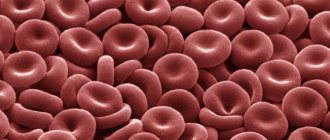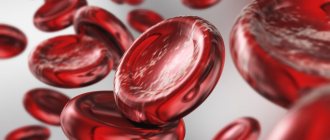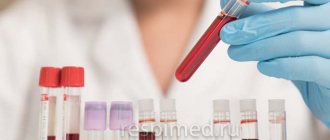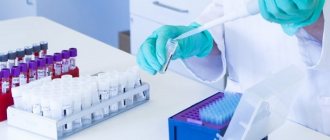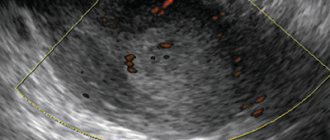Is it possible to use a drop of blood from a finger to diagnose cancer, HIV, check the level of glycated hemoglobin in a diabetic, and identify dozens of other diseases?
Elizabeth Holmes, founder of the American company Theranos, assured that this is real. She believed that the “barbaric” diagnostic methods, when a health worker pierces a vein with a needle and collects blood in a test tube, would soon come to an end. Doctors and scientists believed the promises of the young billionaire. She has been called "the next Steve Jobs" and was included in Forbes' list of the most powerful women of 2015. Experts estimated the value of Theranos at $9 billion, but already in 2021 it fell to zero. In June 2018, the court charged Elizabeth with fraud. Now she has lost all company shares and the right to hold management positions for 10 years, and must also pay a fine of $500 thousand.
Of course, it would be great if scientists managed to create a simple and painless analysis that could detect cancer with high accuracy. This would help save many lives. But in medicine everything is much more complicated. In this article we will talk about what blood tests are actually used to diagnose cancer.
Tumor markers
Tumor markers are substances (usually proteins) that cancer cells or normal cells produce in response to a tumor. The level of these substances is determined in tumor tissue, blood, stool, urine and other biological fluids. Many tumor markers are produced in the body normally, but during cancer their levels increase greatly.
There is no “universal” tumor marker that would help diagnose all types of malignant tumors. Each of these substances is specific for one or more specific types of malignant tumors.
Can tumor marker tests be used to screen for cancer?
In order for a particular diagnostic method to be used for screening, it must have two characteristics:
- High sensitivity, that is, the ability to accurately identify sick people and produce as few false negative results as possible (when a person is sick and the test result is negative).
- High specificity is the ability to correctly identify people who do not have cancer, producing as few false positive results as possible (when a person is healthy, but the analysis shows that he has a malignant tumor).
Tumor marker tests are not sensitive or specific enough to be used for screening. In cancer, the levels of these substances are not always increased, but at the same time, they can increase in healthy people, with benign neoplasms.
For example, to screen for prostate tumors, a blood test for PSA (PSA), a prostate-specific antigen, is used. But its level can also be elevated in cases of benign prostatic hyperplasia. Most often, men with elevated PSA levels do not have a malignant tumor. Studies have been conducted that show that such screening only slightly reduces the mortality rate from malignant prostate tumors. At the same time, in case of a false positive result, to confirm or exclude the diagnosis, the man has to perform other studies that carry certain risks.
Determining the level of tumor markers is not suitable as an independent method for diagnosing cancer. Its results need to be confirmed by biopsy and other studies.
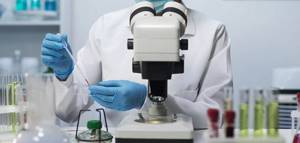
Why are tumor marker tests performed?
In modern oncology, such tests are mainly carried out to monitor the course of the disease and the effectiveness of treatment over time. If the tumor marker level decreases, it means that the medications prescribed by the doctor are helping. If the indicators remain at a stable level or increase, this indicates that the tumor is not responding to therapy. In this case, it is not so much the results of one analysis that play an important role, but their changes in dynamics.
In some cases, a blood test for tumor markers before starting treatment helps to choose the right drugs, determine the stage of cancer, and the prognosis.
After treatment is completed, the doctor may order periodic tests in order to detect a recurrence in time.
What types of tumor markers are determined for malignant tumors?
The main types of tumor markers that can be determined in the blood are presented in the table:
| Name | What types of cancer is it associated with? | Why is the analysis performed? |
| Alpha fetoprotein (AFP) |
| Diagnosis of liver cancer, determination of stage and prognosis for germ cell tumors, monitoring the effectiveness of treatment |
| Human chorionic gonadotropin (hCG), beta subunit |
| Assessment of stage, prognosis, monitoring of treatment effectiveness |
| Prostate-specific antigen (PSA, total and free) |
| Screening, assessment of the need for prostate biopsy, monitoring the effectiveness of treatment, diagnosis of relapse |
| Carbohydrate antigen 15-3 (CA 15-3) |
| Monitoring the effectiveness of treatment, diagnosing relapse |
| Carbohydrate antigen 125 (CA-125) |
| As a diagnostic method to monitor the effectiveness of treatment and detect relapse |
| Carbohydrate antigen 19-9 (CA 19-9) |
| As a diagnostic method to monitor the effectiveness of treatment and detect relapse |
| Cytokeratin fragment 21-1 (Cyfra-21-1) |
| Diagnosis of relapse |
| Human epididymal protein 4 (HE4) |
| Planning optimal antitumor therapy, identifying disease progression and relapse |
| Neurospecific enolase (NSE) |
| As a diagnostic method to assess tumor response to therapy |
| Thyroglobulin |
| Assessment of response to treatment, detection of relapse |
Early stage of cancer
To begin with, let's mention the so-called zero stage - there are cells or a benign tumor that have a high probability of becoming malignant. Precancer does not affect neighboring types of tissue; with timely intervention, the problem is effectively eliminated in the bud.
When systematizing oncological diseases, doctors use the international TNM classification, which reflects data on the size of the tumor, the extent of damage to the lymph nodes and the presence of metastases to distant organs. Stage 1 cancer is a tumor measuring up to 20 mm in its largest dimension, not extending beyond the affected organ and not affecting the lymph nodes. Designated as T1N0M0.

Hospitalization of cancer patients. Daily. Around the clock
9,500 patients trust us annually.
Call me back!
Liquid biopsy
One of the most accurate methods for diagnosing cancer is a biopsy. It is she who often helps to dot the i’s and establish a final diagnosis. During this procedure, the doctor, in one way or another (the least invasive - using a thin needle), obtains a fragment of tumor tissue and sends it to the laboratory for histological, cytological, and molecular genetic research. If cancer cells are found in the sample, the diagnosis of cancer is beyond doubt.
Recently, you can increasingly hear the phrase “liquid biopsy”. In order to detect “traces” of a malignant tumor in the body, 5 ml of blood can be used. From them, 2 ml of plasma are obtained, in which DNA fragments of destroyed (for example, as a result of apoptosis - programmed cell death) cancer cells are detected. This approach has a number of advantages:
- There is no need to perform invasive procedures to obtain a fragment of tumor tissue. It is enough to take a little blood. The procedure can be repeated many times. A liquid biopsy helps detect tumors before they cause symptoms or become visible on pictures.
- Each malignant tumor has a unique set of mutations that determine its properties and response to certain drugs. Liquid biopsy is well suited to detect such mutations. This helps to select the optimal combination of drugs and understand why the tumor has become resistant to therapy.
- Many types of cancer are heterogeneous, meaning different mutations can be present in cells. They may change as the tumor grows. Often the set of mutations in metastases differs from those present in the maternal tumor. During a routine biopsy, the doctor often receives only a fragment of tumor tissue, so the full range of changes in genes is difficult to detect. Liquid biopsy has broader capabilities in this regard.
- The method is applicable for screening patients who have already undergone treatment for cancer. Increased levels of tumor DNA in the blood can be detected several months before a relapse can be detected by other means.
At the moment, the use of liquid biopsy for the diagnosis of lung, breast, prostate, and ovarian cancer is the best studied. For example, epidermal growth factor receptor (EGFR) gene mutations occur in 10–35% of non-small cell lung cancers, and such tumors are sensitive to appropriate targeted therapies. For malignant ovarian tumors, a blood test for mutations in the BRCA1 and BRCA2 genes helps in choosing the appropriate drugs.
What are the signs of blood cancer?
Regardless of the type of disease, adults and children may experience the same symptoms. We have collected all possible manifestations of the disease. Here they are Signs and Symptoms of Childhood Leukemia / American Cancer Society:
Fatigue and fatigue
For example, after usual work, unusually strong fatigue appears. And rest does not always help restore strength. Doctors believe that this symptom of blood cancer occurs due to a decrease in the level of red blood cells and thickening of the blood. As a result, the tissues do not receive enough oxygen, and the person gets tired faster.
Increased body temperature
It can rise above the Fever / US National Library of Medicine norm of 37 °C. Moreover, sometimes this is associated with infectious diseases, and sometimes the cause cannot be determined.
Frequent infectious diseases
Although cancer increases the number of white blood cells in the blood, these cells are abnormally structured and cannot protect against infection. Therefore, a person catches one disease after another.
Sweating during sleep
Even at normal room temperatures, a person may sweat profusely during sleep.
Tendency to bleed
In blood cancer, the division of several types of cells is disrupted. Including platelets, which are responsible for coagulation. Because of this, a person’s gums often bleed, the nose may suddenly bleed, and bruises easily appear on the body. Sometimes small red dots (petechiae) appear on the skin due to slight bleeding.
Bone pain
Dividing blood cells accumulate inside the bones, causing severe bursting pain.
Abdominal enlargement
Since the bone marrow cannot provide the body with healthy cells, the liver and spleen take over the function of hematopoiesis. In addition, tumor cells are able to accumulate in these organs. As a result, they increase greatly, which is especially noticeable in children. Adults usually experience abdominal pain and a feeling of Chronic Lymphocytic Leukemia / US National Library of Medicine of fullness under the ribs due to pressure from organs on neighboring ones.
Weight loss
An enlarged liver and spleen can put pressure on the stomach, so a person has a false feeling of fullness and eats less. In addition, metabolic disorders may occur, causing rapid loss of body weight.
Enlarged lymph nodes
Cancerous blood cells can accumulate in the lymph nodes. Therefore, dense balls appear on the neck, above the collarbones, in the armpits and in the groin. The lymph nodes inside the chest also become enlarged, but this can only be seen on photographs.
Rash
In some types of blood cancer, tumor cells accumulate in the skin. This is called chloroma, or granulocytic sarcoma. The rash resembles small dark spots.
Cough and difficulty breathing
If the lymph nodes and thymus enlarge in the chest, they put pressure on the trachea and bronchi. Therefore, it is difficult for a person to breathe and coughing often occurs.
Swelling in the upper body
The reason for them is still the same - enlarged thymus and lymph nodes of the chest. Only in this case do they put pressure on the superior vena cava and prevent the blood that comes from the arms and head from entering the heart. This is how venous stagnation occurs, which leads to swelling on the face, neck, chest or arms.
Brain damage
At an advanced stage, cancer cells can spread to the brain and spinal cord. This disrupts their functioning, and the person experiences headaches, and sometimes seizures, loss of memory, balance and blurred vision. There are Signs and Symptoms of Acute Lymphocytic Leukemia (ALL) / American Cancer Society nausea and vomiting.
Is it possible to detect a malignant tumor using a blood test?
Unfortunately, at the moment such tests do not exist; oncopathology can be accurately diagnosed only by the results of a biopsy. Although, scientists continue to make attempts, and perhaps in the future a new effective and simple screening will appear. For example, scientists recently presented a blood test that helps identify 50 different types of malignant tumors, while having fairly high sensitivity and specificity. However, for now all this is only at the experimental stage.
General blood analysis
In a general blood test for cancer, some changes can be detected, but they are nonspecific and do not allow an accurate diagnosis to be made. Due to intoxication of the body and the inflammatory process, the level of leukocytes may increase and the leukocyte formula may change (increase in the number of neutrophils, decrease in the number of lymphocytes), and the ESR increases. Some cancer patients have anemia in their blood - a decrease in the number of red blood cells and hemoglobin. Pathologically altered red blood cells (echinocytes) appear as a result of toxic products of tumor cells damaging their membranes.
Specific changes in the blood are detected in malignant diseases of the hematopoietic system.
What is blood cancer
This is the common name for the Myelodysplastic/Myeloproliferative Neoplasms Treatment (PDQ®)–Patient Version/National Cancer Institute group of malignant diseases that affect the hematopoietic organs, namely the bone marrow and its stem cells.
Normally, all blood cells are formed from them: leukocytes, platelets and red blood cells. If pathologically altered cancer cells appear in the bone marrow, they gradually displace healthy ones, for example, red blood cells, and disrupt their normal formation. The type of disease depends on which blood cells are dividing incorrectly. But usually with any blood cancer the number of white blood cells increases. They multiply quickly, but their structure is changed and the cells cannot perform their function. Therefore, doctors call the disease leukemia Myelodysplastic / Myeloproliferative Neoplasms Treatment (PDQ®) – Patient Version / National Cancer Institute and distinguish several types:
- myoblastic;
- lymphoblastic;
- erythromyeloblastic;
- monoblastic;
- megakaryoblastic;
- erythremia;
- lymphocytic leukemia;
- essential thrombocythemia;
- multiple myeloma;
- histiocytosis.
Biochemical blood tests for cancer
Biochemical research is included in the examination program for many oncological diseases. The main purpose of this analysis is to evaluate the functions of internal organs affected by the tumor process. Six blood parameters are most important:
- The level of total protein and albumin in many patients decreases due to its high consumption by tumor cells, liver damage (protein synthesis occurs in it), malnutrition as a result of lack of appetite, and damage to the digestive organs by the tumor process.
- Urea level. Its increase in the analysis results occurs due to tumor decay, accompanied by protein destruction, or impaired renal function.
- Blood glucose levels increase in some cancers.
- Bilirubin levels increase as a result of liver damage and obstructive jaundice.
- An increase in the level of the ALT enzyme occurs with liver damage and some other pathological conditions.
- An increased level of alkaline phosphatase in the analysis may indicate damage to the liver, gall bladder, and bones by the tumor process.
Stages of the disease
At the early – zero stage, patients experience a simple increase in the number of lymphocytes in the blood.
There are 5 stages of the disease , and the countdown starts from 0. The stages are numbered from 0 to 4.
- At stage 1, the pathological process involves the lymph nodes, which increase in size. Sometimes the patient feels the enlarged nodes on his own; in other cases, they are discovered by a doctor during diagnosis. These patients usually also have elevated white blood cell levels.
- At the 2nd stage of lymphocytic leukemia, patients either have an enlarged liver or spleen, or both at the same time. This symptom occurs due to an increase in the number of lymphocytes within these organs.
- Stage 3 of the disease is characterized by anemia, meaning that the hemoglobin level does not exceed 10 units.
- Stage 4 is characterized by low platelet levels, or thrombocytopenia. The number of platelets in the blood of patients does not exceed 100 thousand.
When should you get tested for tumor markers?
Blood for tumor markers is usually donated by patients who have already been diagnosed with cancer and are undergoing treatment. This helps evaluate the effectiveness of antitumor therapy:
- If the tumor marker level remains stable or decreases, this indicates that the drugs are helping.
- If tests over time show an increase in the level of tumor markers, it means that the disease is progressing and it is necessary to change the treatment regimen.
In people who have already completed treatment, tumor marker levels can be determined to diagnose relapse. In healthy people, such tests on their own are largely meaningless for screening purposes; they can only be meaningful in combination with other diagnostic methods.
What indicators indicate cancer?
There are some screening tests that allow you to suspect a malignant tumor at an early stage. But the key word here is “suspect.” Currently, in order to confirm the malignant nature of a neoplasm, it is almost always necessary to perform a biopsy and histological examination. If cancer cells are found when examining a tissue sample under a microscope, the diagnosis is beyond doubt.
Laboratory studies of biological fluids that could accurately determine the oncological process in the body do not currently exist in clinical practice.
Will there be a revolution in cancer diagnostics soon?
Perhaps someday liquid biopsy will replace the classical one, but scientists believe that this will not happen in the foreseeable future. The study of tumor tissue fragments remains the gold standard for diagnosing cancer. A blood test for tumor DNA is not an alternative, but an addition.
Liquid biopsy is improving and its capabilities are growing, but scientists still have to answer many questions. To what extent will such tests help improve the effectiveness of cancer treatment and reduce cancer mortality? Are they always better than classical diagnostic methods? How accurate are they at different stages of the malignant process? Do they always provide a complete picture of the entire spectrum of mutations in tumor tissue?
At the moment, no test can accurately show whether a person has cancer.
For early diagnosis of cancer. There are special screening studies. Get a consultation with an oncologist at the Euroonco clinic and find out whether you are in a high-risk group and what screening tests are necessary in your case. Book a consultation around the clock +7+7+78
How does acute and chronic leukemia manifest?
There is a division into acute and chronic leukemia . Both types of disease can be diagnosed based on a complete blood test.
Some types of chronic leukemia have no symptoms at first. Pathology is often discovered incidentally when a patient is admitted to the intensive care unit for a completely different reason. For example, when a patient's blood is taken for analysis after he has been in a traffic accident, the doctor notes that the level of white blood cells is too high. Sometimes a patient comes for a routine consultation with a therapist, and after some time the doctor says: “You know, last year your white blood cell count was slightly elevated, although it remained within the normal range. Now your white blood cell count is even higher, so you need to be examined.” So the need for a diagnosis does not always arise due to the appearance of symptoms.
One of the most terrible properties of this disease is the speed of its development. This is a characteristic feature of acute leukemia. You can feel great, except maybe feel a little tired, and after three weeks you already suffer from bleeding gums. All it takes is hitting the kitchen sink to get a huge bruise instead of a small one. The patient develops petechiae - red dots on the legs. Some people notice blood in their urine. All these symptoms occur in a short time because acute leukemia very quickly disrupts the production of normal blood cells.
Find out if the treatment is prescribed correctly
